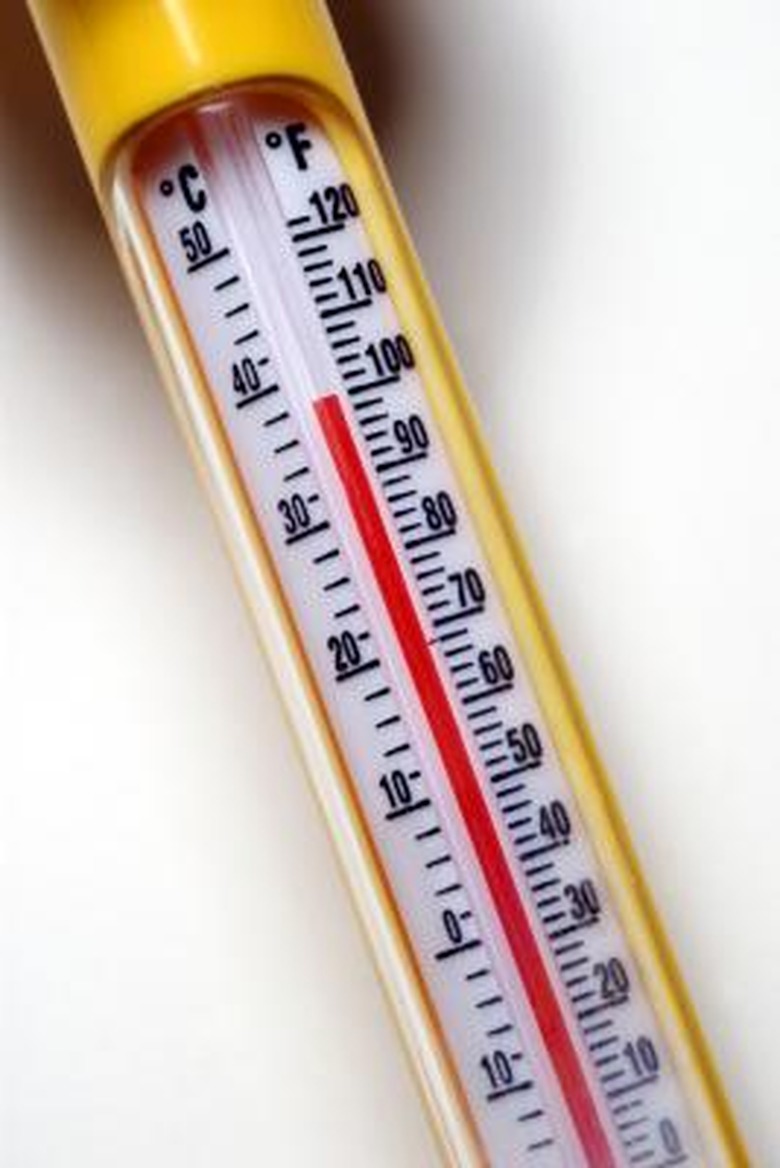How To Make A Thermometer For Kids
Making a thermometer is a simple and fun activity for teaching children about temperature. This thermometer does not measure exact degrees, but will allow children to experiment with how changes in temperature affect a thermometer. The effects of heat and cold that move mercury within a traditional thermometer will cause the liquid in your homemade thermometer to move, as well. As the temperature around your homemade thermometer increases, the liquid inside will expand and rise; as the temperature decreases, the liquid will reverse its expansion and go back down.
Step 1
Fill the bottle 1/4 of the way full with water.
Step 2
Pour rubbing alcohol in until the bottle is half full.
Step 3
Add a drop or two of red food coloring to simulate mercury.
Step 4
Place the straw in the bottle, but do not let it touch the bottom. Press a small amount of modeling clay on top of the straw and use the clay to seal the edges of the bottle's top. The clay will hold the straw in place and prevent it from touching the bottom of the bottle.
Step 5
On the side of the bottle, use a permanent marker to label how high the liquid inside your thermometer is at room temperature.
Step 6
Change the bottle's environment to see how temperature affects the "thermometer" inside. Place the bottle inside a refrigerator, freezer, bowl of ice or other cold place, and let the bottle cool off. The mixture inside will go down and take up less space in colder temperatures. Mark the side of the bottle to document how far down the liquid has fallen.
Step 7
Make other adjustments to the temperature around the bottle and observe how your thermometer reacts. Place the bottle near a hot area, such as a heater, radiator or oven with its door cracked open. You could also simply hold the bottle and allow your body heat to warm it. As the temperature around the bottle increases, the liquid inside will expand. Because the liquid no longer fits in the bottom of the bottle, it will begin moving higher up the straw. Be sure to mark the bottle to show the level where the liquid rises in the warm environment.
Things Needed
- Clear Plastic Bottle
- Rubbing Alcohol
- Tap Water
- Clear Plastic Drinking Straw
- Permanent Marker
- Red Food Coloring
- Modeling Clay
TL;DR (Too Long; Didn't Read)
With young children who find it difficult to comprehend the bottle markings, you may want to make several thermometers and place them in a variety of environments simultaneously. You can then compare all of the bottles together side by side.
Warning
Do not allow children to drink the mixture in the bottle. Be sure to dispose of the bottle properly to avoid accidental re-use.
Cite This Article
MLA
Watson, Angela Powell. "How To Make A Thermometer For Kids" sciencing.com, https://www.sciencing.com/make-thermometer-kids-4867474/. 24 April 2017.
APA
Watson, Angela Powell. (2017, April 24). How To Make A Thermometer For Kids. sciencing.com. Retrieved from https://www.sciencing.com/make-thermometer-kids-4867474/
Chicago
Watson, Angela Powell. How To Make A Thermometer For Kids last modified March 24, 2022. https://www.sciencing.com/make-thermometer-kids-4867474/
